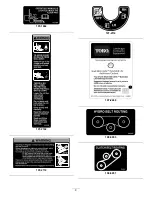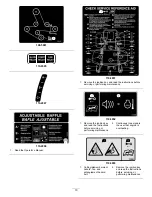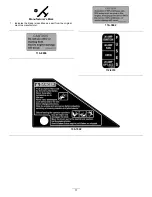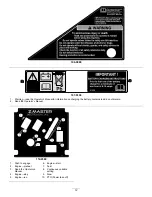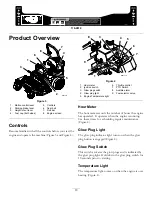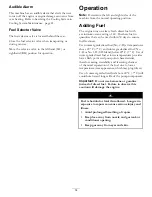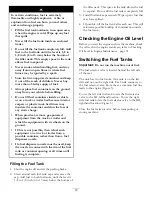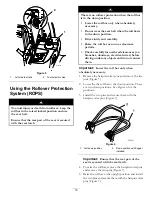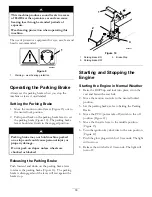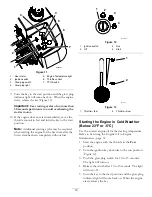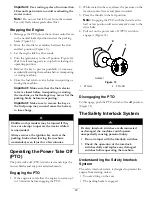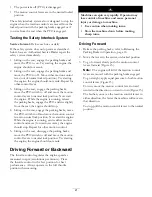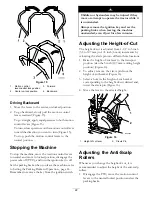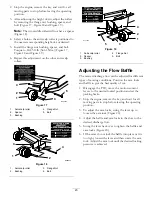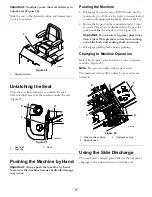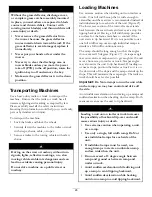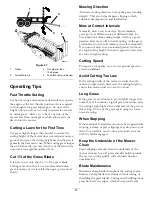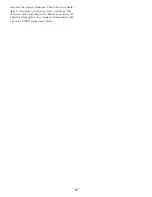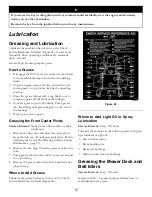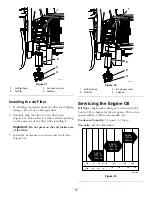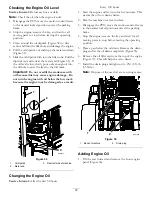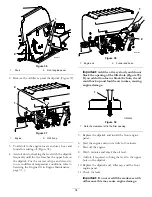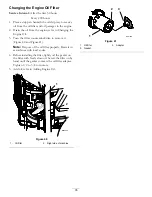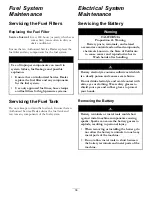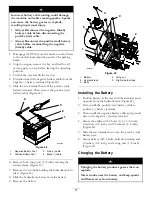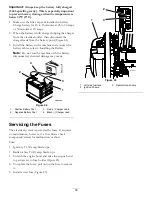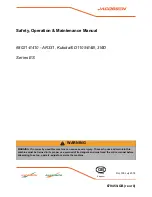
2. Stop the engine, remove the key, and wait for all
moving parts to stop before leaving the operating
position.
3. After adjusting the height-of-cut, adjust the rollers
by removing the flange nut, bushing, spacer, and
bolt (Figure 17 , Figure 18 and Figure 19 ).
Note:
The two middle rollers will not have a spacer
4. Select a hole so the anti-scalp roller is positioned to
the nearest corresponding height-of-cut desired.
5. Install the flange nut bushing, spacer, and bolt.
Torque to 40-45 ft-lb (54-61 N•m) (Figure 17 ,
Figure 18 and Figure 19 ).
6. Repeat this adjustment on the other anti-scalp
rollers.
G000942
1
2
3
4
5
Figure 17
1.
Anti-scalp roller
4.
Flange Nut
2.
Spacer
5.
Bolt
3.
Bushing
G000943
1
2
3
4
Figure 18
1.
Anti-scalp roller
3.
Flange Nut
2.
Bushing
4.
Bolt
G000944
1
2
3
4
5
Figure 19
1.
Anti-scalp roller
4.
Flange Nut
2.
Spacer
5.
Bolt
3.
Bushing
Adjusting the Flow Baffle
The mower discharge flow can be adjusted for different
types of mowing conditions. Position the cam locks
and baffle to give the best quality of cut.
1. Disengage the PTO, move the motion control
levers to the neutral locked position and set the
parking brake.
2. Stop the engine, remove the key, and wait for all
moving parts to stop before leaving the operating
position.
3. To adjust the cam locks, swing the lever up to
loosen the cam lock (Figure 20).
4. Adjust the baffle and cam locks in the slots to the
desired discharge flow.
5. Swing the lever back over to tighten the baffle and
cam locks (Figure 20).
6. If the cams do not lock the baffle into place or it is
too tight, loosen the lever and then rotate the cam
lock. Adjust the cam lock until the desired locking
pressure is achieved.
23

